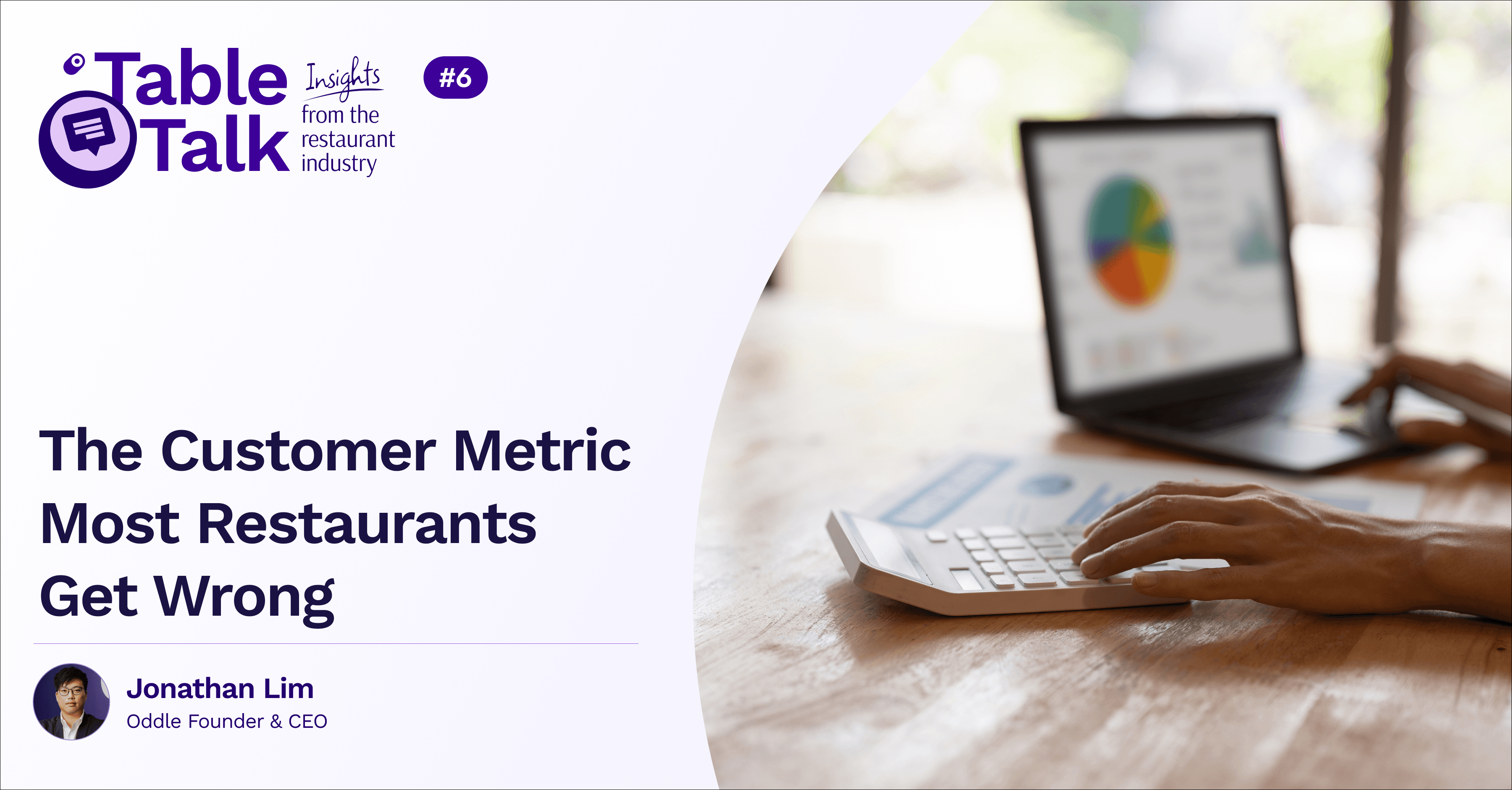The Customer Metric Most Restaurants Get Wrong
Restaurant owners love tracking spend — it feels like a clear sign of success. But the truth? Spend has a ceiling. Frequency doesn’t. And that’s where the real value lies.

If there’s one metric restaurant owners tend to obsess over, it’s how much each customer spends.
And I get it—it’s easy to track, feels tangible, and gives you a clear signal of “value.”
But here’s a counterpoint:
High spend doesn’t equal high value. Not really.
Let me explain.
The Ceiling of Spend
There’s a limit to how much someone can eat in one sitting. Whether it’s a $20 lunch or a $100 dinner, spend per visit is capped by appetite, occasion, and menu pricing.
And here’s the irony I’ve observed time and time again:
When I ask restaurant owners,
“What’s your average spend per customer?”
They almost always answer confidently:
“Around $25–30,” or “$50–60 depending on the setup.”
So if we already know what most customers are spending,
why the obsession with tracking individual spend to identify ‘high-value’ customers?
It’s contradictory.
What matters more isn’t whether someone spends $28 or $32—it’s whether they come back once, twice, or ten times.
Yet many restaurants are fixated on chasing the big-ticket diner, instead of nurturing consistent regulars who quietly drive long-term profitability.
That’s why it’s time to shift focus.
The Real Revenue Formula
Here’s a better way to think about Customer Lifetime Value (CLTV):
CLTV = Active Customers × Targeted Spend per Visit × Visit Frequency
Out of these three levers, frequency is the one with the most headroom.
Because while spend per visit is capped, there’s no limit to how often a happy customer can return.
What the Data Tells Us
We recently analyzed a large sample of return visit data from restaurants using Oddle Terminal—specifically, how many days it took for a customer to return after their first visit.
The result? A classic decay curve:
Most customers who return do so within the first 14 days. After that, the chances drop significantly.
But here’s what’s fascinating:
There are consistent spikes every 7 days.
That tells us two things:
- Recency matters – If you want someone to come back, you need to reach them soon.
- Habit matters even more – Consumers are creatures of routine.
A Story That Proves the Point
Late last year, I had lunch with my former JC teacher and brought him to Abundance at Jalan Besar. He loved the beef noodles and said,
“I’ll probably be back next Thursday.”
When I asked why Thursday, he said,
“That’s my free day—I plan my lunches around my teaching schedule.”
He didn’t need a promo code. He didn’t need a voucher.
He needed a routine—and the restaurant happened to fit into it.
Smart restaurants don’t just offer reasons to return.
They find ways to fit into their customers’ lives.
What Smart Restaurants Are Doing Differently
At Oddle, this is exactly what we help restaurants systematize.
With our Loyalty Program and Terminal integration, we help restaurants:
- Capture customer data at every visit (via check-in or payment)
- Automate reminders at strategic touchpoints (like Day 7 and Day 35)
- Give customers a reason to return, whether it’s a thoughtful nudge, an exclusive offer, or a well-timed message
Automatic reminder emails and birthday rewards are sent to customers after they sign up as members.
This isn’t about spamming inboxes or slashing prices.
It’s about building top-of-mind awareness—and doing it consistently.
Because the customer who returns five times and spends $30 each visit?
They’re worth far more than a one-time $120 diner who never comes back.
Let’s Rethink Loyalty
Too many restaurants still believe that loyalty just “happens.”
But the best ones know—it’s engineered.
And here’s where most go wrong:
They rely on memory and gut feel to judge loyalty.
But our minds are wired for recency bias and anecdotal thinking.
That’s why data matters.
It reveals the patterns we miss. It shows us when customers are fading, when they’re ready to return, and how to bring them back.
But data only works when you're capturing the full picture.
Most restaurants only track the person paying—but that’s just one seat at the table.
You’re missing the rest.
And that’s a problem—because anyone at that table could become your next regular… or advocate.
At Oddle, we believe loyalty starts with visibility.
That’s why our system is built to capture all customers, not just the payer—so you can build relationships with everyone, not just the ones holding the bill.
While instincts are prone to judgment errors, the numbers don’t lie.
Taking a data-driven approach—built on full visibility—unlocks predictable, repeatable revenue.
If you’re only tracking spend, you’re measuring the wrong thing.
You’re missing recency.
You’re missing frequency.
You’re missing the relationships that could define your restaurant’s future.
If you're curious to see how your restaurant is performing on recency, frequency, and return rate—let’s chat.
We’d be happy to show you what the data says—and how to turn it into action.
Book a Free Google Review Strategy Call →
Until next time,
Jonathan Lim
Founder & CEO, Oddle